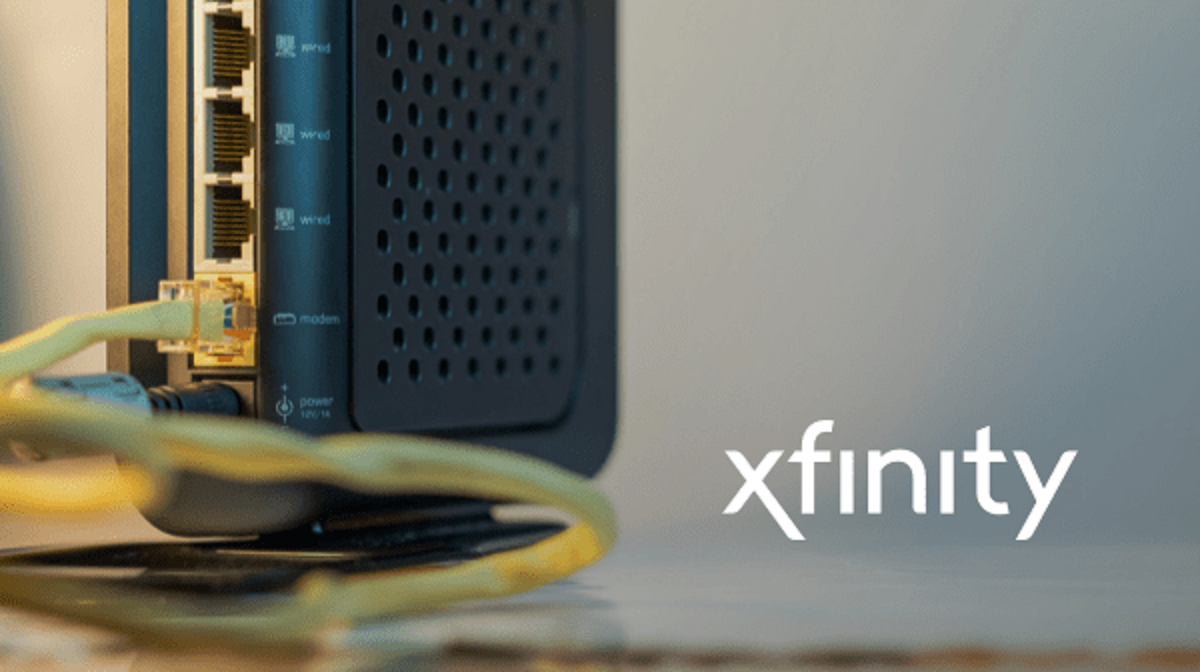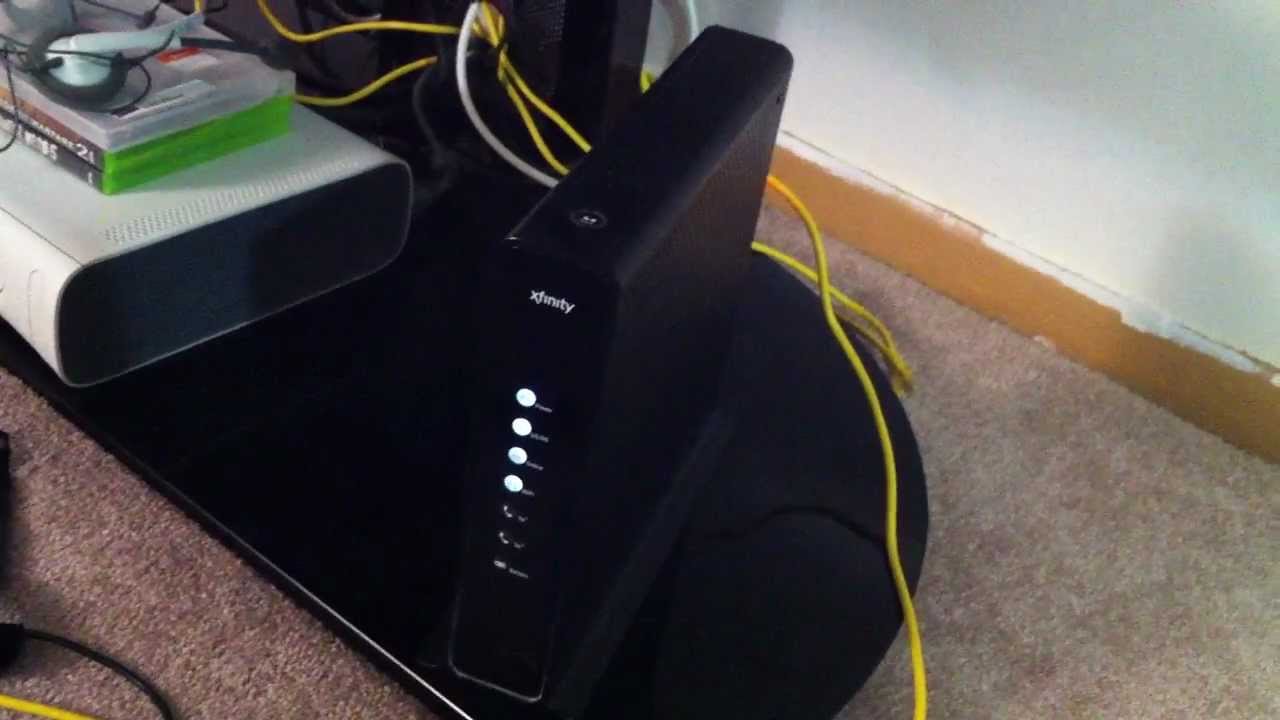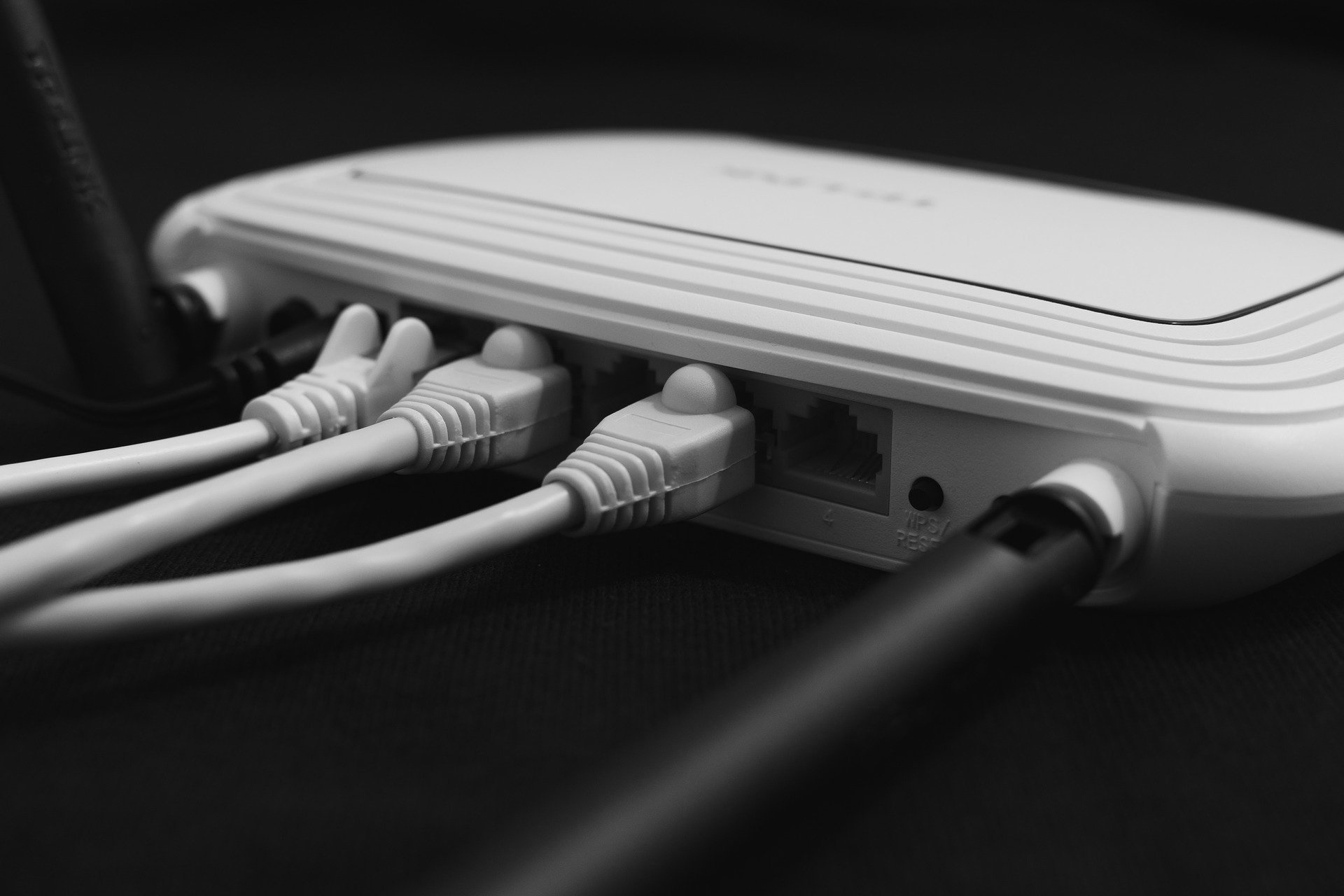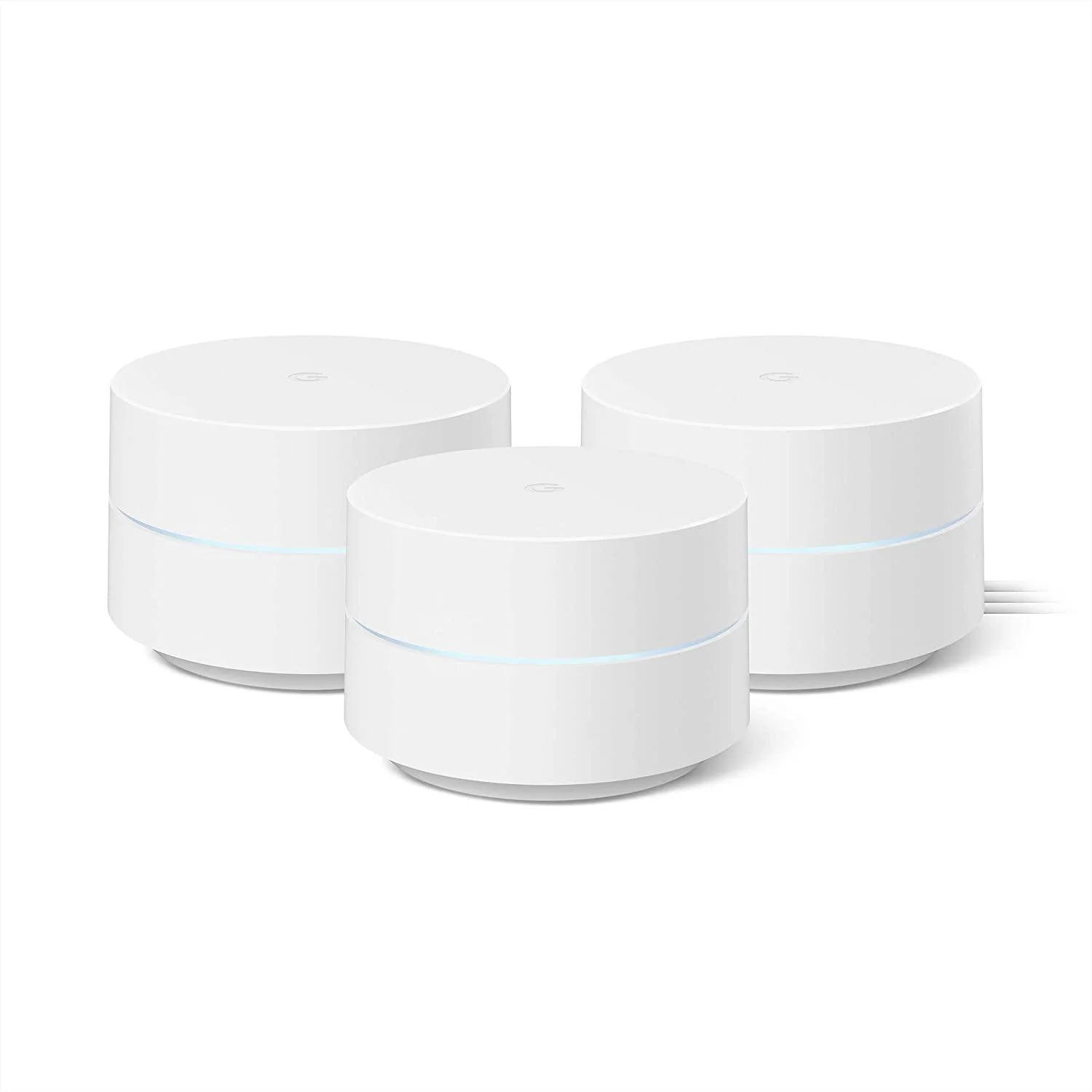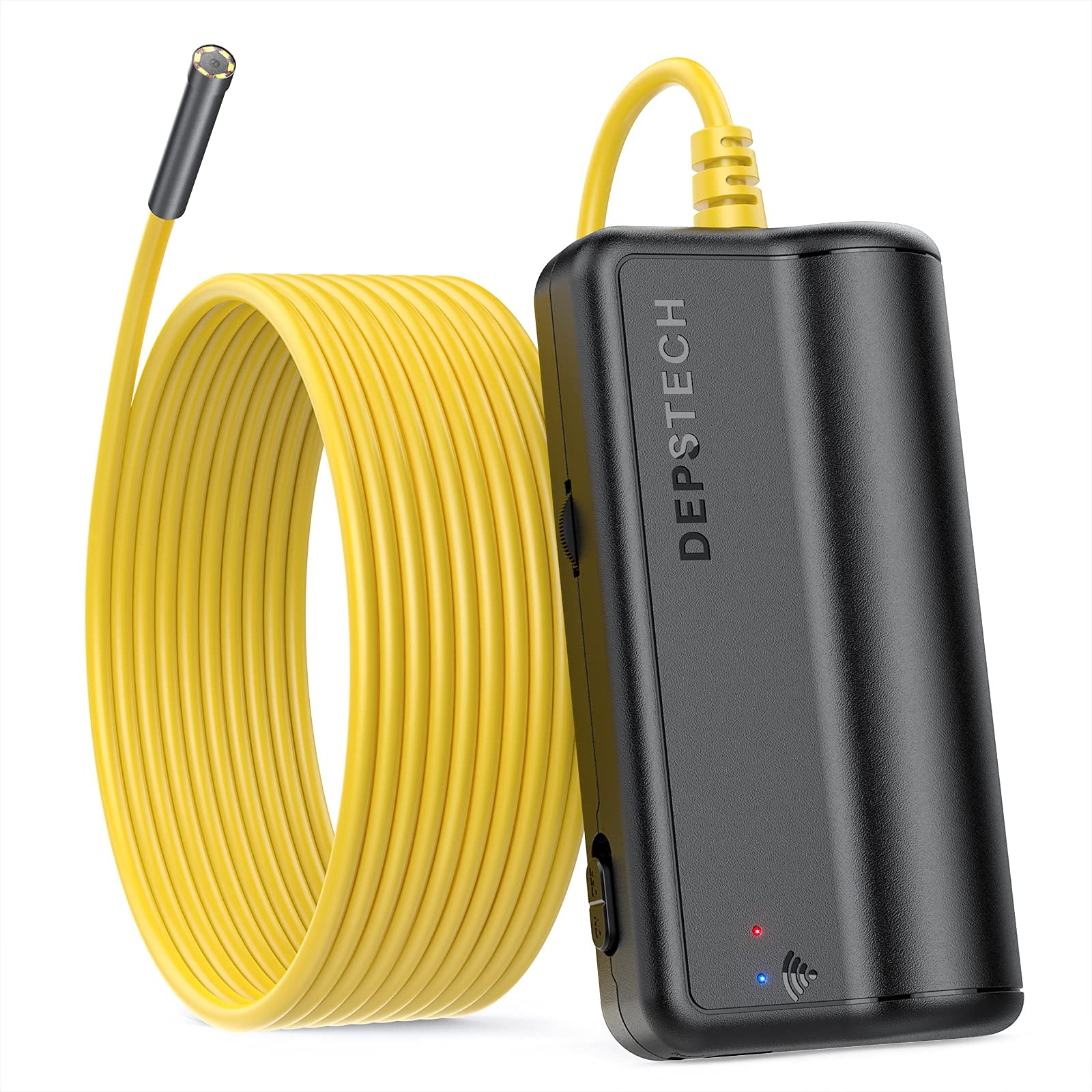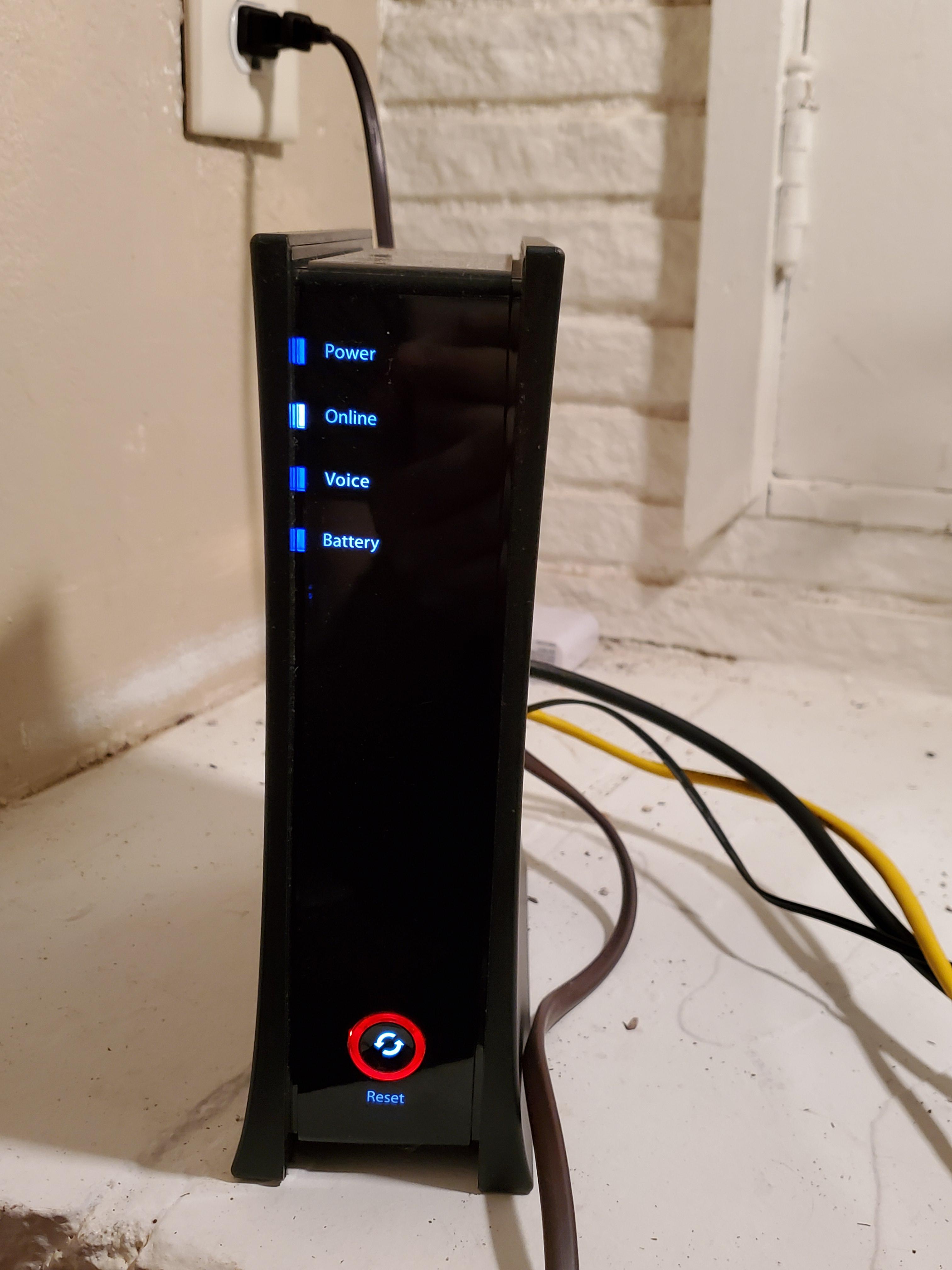Introduction
Welcome to the digital age, where staying connected to the internet has become an absolute necessity. Whether it’s for work, entertainment, or simply staying in touch with loved ones, having a reliable internet connection is vital. Traditionally, getting internet access meant subscribing to a cable service provider. However, advancements in technology have introduced new alternatives, including wifi without cable.
In this article, we will explore the various options available for obtaining wifi without relying on traditional cable connections. We will delve into the advantages and disadvantages of each option, helping you make an informed decision that aligns with your needs and budget. So, if you’re ready to embark on the journey of going cable-free while staying connected, read on!
Before we dive into the alternatives, let’s first understand the difference between wifi and cable connections. Wifi, short for wireless fidelity, allows you to connect to the internet without using physical cables. Instead, it utilizes radio frequencies to transmit data between your devices and a wireless router. On the other hand, cable internet uses coaxial cables to deliver internet access to your home.
Now, you might be wondering, why would someone want wifi without cable in the first place? The reasons can vary. Some people want to break free from the limitations of cable services, such as high costs, contracts, and limited coverage. Others might live in areas where cable internet is not available or where they want to explore different options for internet access.
Fortunately, there are several alternative internet service providers that offer wifi without relying on cable connections. These options include mobile hotspots, public wifi networks, satellite internet, fixed wireless internet, DSL internet, fiber optic internet, and WiMAX internet. Each of these has its own set of features, benefits, and drawbacks.
Throughout this article, we will delve into each of these options, comparing their costs, speeds, and availability. We will also discuss some key factors to consider before making the switch to wifi without cable. So, without further ado, let’s explore the exciting world of cable-free connectivity!
Understanding Wifi and Cable Connections
Before we delve into the alternatives for wifi without cable, it’s essential to have a clear understanding of how both wifi and cable connections work.
Wifi, as mentioned earlier, is a wireless technology that allows devices to connect to the internet without the need for physical cables. It operates by transmitting data through radio frequencies. To establish a wifi connection, you need a wireless router that acts as a central hub for transmitting and receiving data between devices.
Cable connections, on the other hand, use coaxial cables to deliver internet access to your home. These cables are typically made of copper or aluminum and provide a more direct and stable connection. The cables are connected to a modem, which filters and decodes the data received from the internet service provider (ISP) before transmitting it to your devices.
Both wifi and cable connections have their merits. Wifi offers the advantage of mobility, allowing you to connect multiple devices without the limitations of physical cables. It enables you to access the internet from any corner of your home, providing flexibility and convenience.
On the other hand, cable connections tend to offer faster and more stable internet speeds compared to wifi. Since the connection is established through physical cables, there is less interference and potential for signal loss. Cable internet is especially beneficial for activities that require high bandwidth, such as online gaming or streaming high-definition videos.
While cable connections have traditionally been the go-to option for home internet access, wifi has gained significant popularity due to its convenience and flexibility. Many households now rely primarily on wifi for their internet needs, often in combination with cable connections for enhanced speed and stability.
Understanding the differences between wifi and cable connections will help you make a more informed decision when exploring alternative options for wifi without cable. Each option has its own advantages and limitations, so it’s crucial to choose one that best suits your specific needs and circumstances.
Why You Might Want Wifi Without Cable
As technology continues to advance, the need for wifi without cable has become more prevalent. There are several reasons why you might consider opting for an internet connection that doesn’t rely on traditional cable services.
One of the primary reasons is the desire for greater flexibility and freedom. Cable internet services often come with lengthy contracts, which can be limiting and lock you into a specific provider for a certain period. With wifi without cable, you have the freedom to choose from a variety of internet service providers and options without the commitment of a contract.
Cost is another significant factor. Cable internet services can be quite expensive, with additional fees for equipment rental, installation, and data overage. By opting for wifi without cable, you may find more affordable options that fit within your budget. Additionally, some wifi alternatives offer pay-as-you-go plans, allowing you to pay only for the data you use.
For those living in areas where cable internet is not available or of poor quality, wifi without cable provides an alternative means of staying connected. Rural areas, in particular, often suffer from limited cable coverage. By exploring wifi alternatives, you can potentially access the internet even in remote locations.
Flexibility and mobility are also key reasons why people might prefer wifi without cable. With wifi, you can connect numerous devices simultaneously, such as laptops, smartphones, tablets, and smart home devices. This flexibility allows you to move around your home or office without being confined to specific cable connections.
Finally, wifi without cable opens up possibilities for digital nomads and frequent travelers. Mobile hotspots, for example, provide on-the-go internet access, allowing you to stay connected wherever you are. This is especially beneficial for those who rely on a stable internet connection for work or leisure activities while being constantly on the move.
By opting for wifi without cable, you can enjoy greater flexibility, cost savings, improved coverage, and the ability to connect multiple devices. It’s important to assess your specific needs and circumstances to determine whether making the switch to wifi without cable is the right choice for you.
Exploring Alternative Internet Service Providers
When it comes to wifi without cable, there are several alternative internet service providers that offer different options for connecting to the internet. Let’s take a closer look at some of these alternatives:
1. Mobile Hotspots: Mobile hotspots are portable devices that create a wifi network using cellular data. They allow you to connect your devices to the internet wherever you have cellular coverage. Mobile hotspots are ideal for those who need internet access on the go or in areas with limited or no cable coverage.
2. Public Wifi Networks: Public wifi networks are available in various places such as cafes, libraries, airports, and shopping malls. They provide free or paid internet access to the public. While convenient, public wifi networks may have limitations in speed and security, so it’s advisable to use them cautiously.
3. Satellite Internet: Satellite internet is a viable option for those living in rural or remote areas with limited or no cable coverage. It works by transmitting and receiving data signals between a dish installed at your location and satellites in space. Although satellite internet can provide wide coverage, it may experience latency or slower speeds compared to other options.
4. Fixed Wireless Internet: Fixed wireless internet utilizes radio signals from nearby towers to provide internet access. It requires a small antenna installed on the exterior of your home or office, which communicates with wireless towers. Fixed wireless internet is known for its reliability, high speeds, and low latency. It’s a great alternative for areas where cable services are not available.
5. DSL Internet: DSL (Digital Subscriber Line) internet uses existing telephone lines to transmit data. It offers faster speeds compared to dial-up internet and has wider coverage than cable internet. However, DSL speeds can vary depending on the distance from the provider’s central office, so it may not be available in all areas.
6. Fiber Optic Internet: Fiber optic internet is one of the fastest and most reliable options for internet access. It uses thin strands of glass or plastic to transmit data as pulses of light. Fiber optic internet provides high-speed and symmetrical upload and download speeds, making it ideal for bandwidth-intensive activities.
7. WiMAX Internet: WiMAX (Worldwide Interoperability for Microwave Access) is a wireless broadband technology that offers high-speed internet access. It uses microwaves to transmit data between antennas and receivers. WiMAX internet is suitable for areas with limited cable coverage as it can provide long-range connectivity.
Each alternative internet service provider has its own advantages and limitations in terms of coverage, speed, and cost. It’s important to research and compare the options available in your area to find the best fit for your needs and preferences.
Option 1: Mobile Hotspots
When it comes to wifi without cable, one popular option is the use of mobile hotspots. Mobile hotspots are portable devices that create a wifi network using cellular data, allowing you to access the internet wherever you have cellular coverage. Here’s a closer look at this alternative internet service provider:
Advantages:
- Portability: Mobile hotspots are compact and easy to carry, making them ideal for people who are constantly on the move or need wifi access while traveling.
- Flexibility: With a mobile hotspot, you can connect multiple devices to the internet simultaneously, including laptops, smartphones, tablets, and smart home devices.
- Wide Coverage: Mobile hotspots rely on cellular data, which means you can access the internet in various locations, even in areas where traditional cable services may not be available.
- No Contracts: Many mobile hotspot plans are available on a pay-as-you-go basis, eliminating the need for long-term contracts and providing more flexibility.
Limitations:
- Data Limits: Most mobile hotspot plans come with data limitations and may charge additional fees for exceeding those limits. This can be a concern if you require a large amount of data for activities such as streaming or downloading.
- Speed and Congestion: The speed of a mobile hotspot can vary depending on the network coverage and the number of people using the same cellular tower. In densely populated areas, network congestion can result in slower speeds.
- Dependence on Cellular Coverage: Mobile hotspots rely on a strong cellular signal for internet access. If you are in an area with weak or no cellular coverage, your mobile hotspot may not provide a reliable connection.
- Cost: While mobile hotspot plans can be affordable, the cost can add up if you require large amounts of data or if you frequently use the hotspot for bandwidth-intensive activities.
Mobile hotspots are a convenient option for accessing wifi without cable, especially for those who value portability and flexibility. They are particularly beneficial for individuals who are frequently on the go or residing in areas with limited cable coverage.
By comparing different mobile hotspot providers and plans, you can find a suitable option that aligns with your data needs, budget, and geographic location. Whether you require internet access for work or personal use, mobile hotspots offer an accessible and versatile solution for staying connected without relying on traditional cable services.
Option 2: Public Wifi Networks
Public wifi networks are another alternative for accessing wifi without a cable connection. These networks are available in various locations such as cafes, libraries, airports, and shopping malls, providing free or paid internet access to the public. Let’s explore the advantages and limitations of this option:
Advantages:
- Accessibility: Public wifi networks are widely available in popular areas, making it convenient to access the internet without the need for a personal hotspot or cable connection.
- Cost Savings: Many public wifi networks offer free internet access, allowing you to save on monthly internet expenses, especially if you’re a frequent visitor to places with free wifi.
- No Data Limits: Unlike some mobile hotspot plans, public wifi networks usually do not have data limits, allowing you to use the internet without worrying about exceeding your allotted data.
- Convenience: Public wifi networks provide a seamless internet connection for quick tasks such as checking emails, browsing the web, or accessing social media while on the go.
Limitations:
- Speed and Performance: The speed and performance of public wifi networks can vary significantly depending on the number of users connected to the network. During peak usage times, the network may experience congestion, resulting in slower speeds.
- Security Risks: Public wifi networks can pose security risks, as they are often unencrypted. This makes it easier for hackers to intercept sensitive information, such as passwords or personal data, if proper security precautions are not taken.
- Reliability: Since public wifi networks are shared among many users, there may be instances where the network is not functioning properly or experiencing downtime, causing disruptions in your internet access.
- Limited Range: Public wifi networks typically have a limited range, confined to a specific area like a coffee shop or a library. Once you move outside of the network’s range, you will lose internet connectivity.
Public wifi networks are a convenient option for short-term internet access when you’re in places where free or paid public wifi is available. They are suitable for light internet usage, such as checking emails, browsing the web, or casual social media use. However, due to potential security risks and varying network performance, it’s advisable to exercise caution when connecting to public wifi networks.
When utilizing public wifi networks, it’s recommended to use a virtual private network (VPN) to encrypt your data and enhance security. Additionally, avoid accessing sensitive information or conducting financial transactions when connected to public networks.
While public wifi networks may not be suitable for heavy internet usage or for maintaining a consistent and secure connection, they serve as a convenient option when you need internet access on the go or in public spaces without relying on cable connections.
Option 3: Satellite Internet
For those living in areas with limited or no access to cable internet, satellite internet offers an alternative for wifi without cable. Satellite internet works by transmitting and receiving data signals between a satellite dish installed at your location and satellites in space. Let’s explore the advantages and limitations of this option:
Advantages:
- Wide Coverage: Satellite internet can provide internet access to remote or rural areas where traditional cable connections may not be available. It utilizes satellites that orbit the Earth, allowing for coverage in a larger geographic area.
- High Speeds: Satellite internet technology has advanced significantly, offering faster speeds compared to previous generations. This makes it suitable for a variety of online activities, including streaming, online gaming, and video conferencing.
- Content Accessibility: Satellite internet enables you to access online content, services, and platforms without facing limitations based on geographical location, making it especially advantageous for those in remote areas.
- Independence from Physical Infrastructure: Satellite internet does not require physical infrastructure like cables, allowing for more flexibility and adaptability. This makes it a viable option for temporary or mobile setups, such as remote work or travel.
Limitations:
- Latency and Signal Interference: Satellite internet can experience latency due to the time it takes for the signal to travel from the dish to the satellite and back. Additionally, weather conditions, such as heavy rain or snow, can potentially interfere with the signal and affect the quality of the connection.
- Data Caps: Most satellite internet plans come with data caps, which means there are limits to the amount of data you can use within a given period. Going over your allotted data may result in reduced speeds or additional fees.
- Equipment and Installation Costs: Setting up satellite internet requires the installation of a satellite dish and modem, which can involve additional upfront costs. Providers may also charge for professional installation services.
- Higher Pricing: Satellite internet generally comes at a higher price point compared to traditional cable or DSL services. This is due to the unique infrastructure and technology required for satellite connectivity.
Satellite internet is a suitable alternative for wifi without cable, particularly for those in remote or rural areas where other options may be limited. Despite its limitations in terms of latency, data caps, and cost, satellite internet offers wide coverage and improved speeds compared to earlier iterations.
Prior to opting for satellite internet, it’s important to carefully consider factors such as your location, data needs, budget, and the reliability of the connection in your area. Thorough research and comparison of different satellite internet providers and plans can help you make an informed decision about whether satellite internet is the right choice for you.
Option 4: Fixed Wireless Internet
When it comes to wifi without cable, fixed wireless internet is an alternative option worth considering. Fixed wireless internet utilizes radio signals from nearby towers to provide internet access. It requires a small antenna installed on the exterior of your home or office, which communicates with wireless towers. Let’s explore the advantages and limitations of fixed wireless internet:
Advantages:
- Reliability: Fixed wireless internet is known for its reliability, as it is not as susceptible to signal interference as other wireless options. It provides a stable and consistent connection, ensuring a smooth internet experience.
- High Speeds: Fixed wireless internet can offer high-speed internet access, making it suitable for activities that require a significant amount of bandwidth, such as streaming HD videos, online gaming, or video conferencing.
- Wide Coverage: Fixed wireless internet providers typically have a broad coverage area, extending beyond traditional cable connections. This makes it a viable option for those residing in rural or remote areas where other options are limited.
- No Data Caps: Unlike some satellite or mobile internet plans, fixed wireless internet providers often offer unlimited data, allowing you to utilize the internet without worrying about exceeding your data limits.
Limitations:
- Line of Sight: Fixed wireless internet requires a clear line of sight between the antenna on your property and the wireless tower. Obstacles such as buildings, trees, or hills can obstruct the signal and affect the quality of your connection.
- Weather Conditions: Severe weather conditions, such as heavy rain, snow, or strong winds, can potentially impact the signal and cause interruptions or slower speeds. However, modern fixed wireless technology has minimized the sensitivity to weather-related interference.
- Equipment and Installation: Setting up fixed wireless internet requires the installation of specialized equipment, including an outdoor antenna and indoor modem. Providers may charge for equipment costs and professional installation services.
- Availability: While fixed wireless internet providers have expanded their coverage, availability can still be limited, particularly in areas with low population density or challenging terrain.
Fixed wireless internet offers a reliable and high-speed alternative for wifi without cable, especially for those in areas where traditional cable services are not available or are of poor quality. It provides the benefits of stable connectivity, broad coverage, and unlimited data.
If you are considering fixed wireless internet, it’s essential to check the availability of providers in your area and evaluate the line of sight between your property and the wireless towers. Researching and comparing different fixed wireless internet options can help you determine if this alternative is the right fit for your internet needs and geographic location.
Option 5: DSL Internet
DSL (Digital Subscriber Line) internet is another alternative for accessing wifi without cable. DSL utilizes existing telephone lines to transmit data, providing a reliable internet connection. Let’s explore the advantages and limitations of DSL internet:
Advantages:
- Availability: DSL internet is widely available, as it relies on existing telephone lines. This makes it accessible in many areas, including both urban and rural locations.
- Reliability: DSL internet offers a reliable connection, as the signal travels directly through the dedicated telephone line. It provides a consistent performance with minimal interference.
- Speed: DSL can offer higher speeds compared to dial-up connections. While not as fast as cable or fiber optic, DSL can still provide sufficient bandwidth for everyday online activities like browsing, email, and streaming.
- Cost: DSL internet is often more affordable than cable or fiber optic options. It provides a cost-effective solution for those looking for a stable internet connection without breaking the bank.
Limitations:
- Distance Limitations: DSL speeds can vary depending on the distance between your location and the provider’s central office. The signal strength weakens as the distance increases, impacting the overall speed and performance of the connection.
- Upload Speed: DSL internet typically offers slower upload speeds compared to download speeds. This can be a limitation for activities such as video conferencing or uploading large files.
- Competition for Bandwidth: In areas with high DSL demand, the quality of the internet connection can be affected. Multiple users sharing the same line may lead to slower speeds during peak usage times.
- Infrastructure Dependency: DSL relies on the existing telephone lines, and the quality of the connection is dependent on the condition and capacity of the infrastructure. Older or poorly maintained lines may result in a weaker signal or slower speeds.
DSL internet is a reliable and accessible option for those seeking wifi without cable. It offers advantages in terms of availability, reliability, reasonable speeds, and cost-effectiveness. The limitations, such as distance limitations and potential competition for bandwidth, should be considered based on your specific location and internet needs.
If you are considering DSL internet, it’s important to check the availability and performance in your area. Research and compare different DSL providers to find the one that offers the best speeds and pricing options for your internet requirements. By understanding the strengths and limitations of DSL internet, you can make an informed decision to meet your wifi needs without a cable connection.
Option 6: Fiber Optic Internet
When it comes to wifi without cable, fiber optic internet is an exceptional option that provides high-speed internet access. Fiber optic internet uses thin strands of glass or plastic to transmit data as pulses of light, offering superior performance and reliability. Let’s explore the advantages and limitations of fiber optic internet:
Advantages:
- Blazing-Fast Speeds: Fiber optic internet is renowned for its incredibly fast speeds. It can provide symmetrical upload and download speeds, allowing for seamless streaming, online gaming, and simultaneous use of multiple devices.
- Reliability: Unlike traditional copper-based connections, fiber optic internet is less susceptible to signal degradation over long distances. It offers a more reliable and consistent connection with minimal latency, ensuring a smooth online experience.
- Bandwidth Capacity: Fiber optic internet has a higher bandwidth capacity compared to other types of connections. This means it can handle greater data loads and support intensive online activities, making it suitable for households with multiple users or businesses with high data requirements.
- Future-Proof Solution: Fiber optic technology is considered the future of internet connectivity. It has the potential for significant upgrades in the future, ensuring that your connection will remain relevant and capable of meeting the increasing demands of technology.
Limitations:
- Availability: Fiber optic internet is not yet available everywhere, especially in rural or remote areas. It requires substantial infrastructure investments, and providers may focus on densely populated regions first.
- Installation Complexity: Installing fiber optic internet involves specialized equipment and professional technicians. It may require drilling or other modifications to your property, which may involve more significant upfront installation costs.
- Pricing: Fiber optic internet tends to be more expensive compared to other types of connections. However, prices have been gradually becoming more affordable as availability increases and competition among providers grows.
- Dependence on Power: Fiber optic internet relies on electricity to operate. In the event of power outages, you may experience a loss of internet connectivity. It’s advisable to have backup power solutions in place if uninterrupted internet access is critical.
Fiber optic internet offers a high-performance and future-proof option for wifi without cable. Its exceptional speed, reliability, and bandwidth capacity make it a preferred choice for demanding internet users who require fast and consistent connectivity for various online activities.
When considering fiber optic internet, it’s important to check its availability in your area and compare the offerings of different providers. While it may come with higher costs upfront, the benefits of fiber optic internet in terms of speed, reliability, and long-term value make it a compelling choice for those seeking a top-tier internet experience.
Option 7: WiMAX Internet
WiMAX (Worldwide Interoperability for Microwave Access) is a wireless broadband technology that offers another alternative for wifi without cable. WiMAX utilizes microwaves to transmit data between antennas and receivers, providing high-speed internet access. Let’s explore the advantages and limitations of WiMAX internet:
Advantages:
- Wide Coverage: WiMAX internet can provide long-range connectivity, making it suitable for areas with limited cable coverage or in remote locations where other options may not be available.
- High Speeds: WiMAX technology is capable of delivering high-speed internet access that is comparable to other broadband options. This makes it suitable for bandwidth-intensive activities such as streaming, online gaming, and video conferencing.
- Flexibility: WiMAX is a wireless technology, allowing for easy deployment and scalability. It offers flexibility in terms of installation and connection, making it ideal for temporary setups or areas where physical infrastructure is challenging to implement.
- Reliability: WiMAX networks are designed to provide a reliable connection, offering a stable internet experience with minimal interruptions or downtime.
Limitations:
- Availability: WiMAX internet may not be widely available in all areas. The coverage and availability of WiMAX networks depend on the infrastructure and service providers in your region.
- Line of Sight: WiMAX networks typically require a clear line of sight between the antenna and the base station to ensure a strong and consistent signal. Obstacles like buildings or terrain can impact the signal quality and coverage.
- Interference: WiMAX signals can be susceptible to interference from weather conditions, vegetation, or other radio signals operating in the same frequency range.
- Equipment and Costs: WiMAX internet may require the installation of specific equipment, such as an outdoor antenna and modem. This can involve upfront costs and potentially additional fees for professional installation services.
WiMAX internet offers an alternative for wifi without cable, particularly for those in areas with limited options. Its wide coverage and high speeds make it suitable for connecting in remote or underserved locations where traditional cable connections are not available.
Before considering WiMAX internet, it’s important to check the availability and coverage in your area. Compare the offerings of different WiMAX service providers to find the one that offers the best speeds, pricing, and reliability for your internet needs.
WiMAX internet can be a viable option for those seeking a wireless alternative to cable connections, particularly in areas where other wired options are not feasible or accessible.
Comparing Costs and Speeds of Different Internet Options
When exploring wifi without cable, it’s essential to compare the costs and speeds of different internet options available. Each alternative internet service provider comes with its own pricing plans and speed offerings. Let’s take a closer look at how different options stack up:
Mobile Hotspots: Mobile hotspot plans vary in price depending on the data allocation and speed. Costs can range from affordable pay-as-you-go plans to monthly packages. Speeds can range from 4G LTE to 5G, with faster options typically correlating to higher costs.
Public Wifi Networks: Public wifi networks are often free, but some may require payment or a subscription for extended usage. While the cost is usually low, remember that public networks may have speed limitations and potential security risks.
Satellite Internet: Satellite internet tends to have higher upfront costs due to the necessary equipment installation. Monthly plans vary depending on the chosen provider and data speeds. While speeds have improved with newer satellite systems, latency issues may still exist, impacting real-time activities like gaming or video calls.
Fixed Wireless Internet: Fixed wireless internet pricing varies depending on the provider and package options. Costs can be comparable to or slightly higher than cable or DSL providers. Speeds can offer respectable performance, with low latency compared to satellite options.
DSL Internet: DSL internet is often cost-effective, making it an attractive option for those on a budget. Prices vary depending on the plan and speed options available in your area. DSL speeds typically range from a few Mbps to around 100 Mbps, depending on the infrastructure quality and distance from the provider’s central office.
Fiber Optic Internet: Fiber optic internet tends to have higher costs compared to other options due to the significant infrastructure investments required. However, prices have become more competitive as availability increases. Fiber optic speeds can range from 100 Mbps to even 1 Gbps or higher, offering lightning-fast internet access.
WiMAX Internet: WiMAX internet costs can vary depending on the provider and coverage area. Prices may be comparable to DSL or cable internet. Speeds can range from several Mbps to higher speeds, depending on the network configuration and connection quality.
When evaluating costs and speeds, it’s important to consider your specific internet needs and budget. Factors such as the number of users, the types of online activities, and the required reliability should also be taken into account.
Keep in mind that these pricing and speed ranges are general and may vary depending on your location and the service providers available. It’s recommended to research and compare the options in your area to find the best balance between cost and speed that meets your wifi needs without relying on traditional cable connections.
What to Consider Before Switching to Wifi Without Cable
Switching to wifi without cable offers numerous benefits and alternatives for internet access. However, before making the switch, there are several factors to consider. Let’s explore what you should take into account:
1. Coverage and Availability: Assess the coverage and availability of the alternative internet options in your area. Not all options may be available or reliable in your location, so it’s important to research which providers offer services in your area and the quality of their coverage.
2. Speed and Performance: Determine your internet speed and performance needs. Consider the number of users in your household, the online activities you engage in, and the required speed for tasks such as streaming, gaming, or video conferencing. Different internet options offer varying speeds, so choose one that meets your requirements.
3. Data Needs and Usage: Assess your data needs and usage patterns. If you require a large amount of data for streaming, downloading, or uploading large files, consider options with unlimited data or higher data caps. Be aware that some providers may enforce data limits, which can affect your internet experience.
4. Pricing and Budget: Compare the pricing plans and costs associated with the different internet options. Consider not only the monthly fees but also the upfront costs for equipment, installation, or activation fees. Ensure that the chosen option aligns with your budget and provides value for the services you require.
5. Reliability and Stability: Evaluate the reliability and stability of the internet connection. Consider factors such as latency, downtime, signal interference, or weather-related disruptions. Opt for an option that offers a stable and consistent connection, especially if you rely on the internet for work, education, or other critical activities.
6. Customer Support and Service: Research the reputation and customer support of the internet service providers. Look for reviews and feedback from other users to gauge the quality of their customer service and responsiveness to technical issues or service disruptions.
7. Security and Privacy: Consider the security measures offered by the internet service providers. Look for options with encryption protocols, strong network security, and customer data protection. If you frequently handle sensitive information or conduct online transactions, prioritize options that prioritize privacy and security.
8. Contract Terms and Flexibility: Review the contract terms and duration offered by the internet service providers. Determine if you prefer longer-term contracts or if flexible options are more suitable for your needs. Consider the potential costs and implications of early termination or changing providers in case your requirements evolve.
By considering these factors, you can make an informed decision when switching to wifi without cable. Assessing coverage, speed, pricing, reliability, customer support, security, and contract terms will help ensure that you choose an internet option that best meets your specific needs and provides a seamless online experience.
Conclusion
Wifi without cable offers a range of alternative options for internet access, providing flexibility, affordability, and wider coverage for users. Understanding the various alternatives, such as mobile hotspots, public wifi networks, satellite internet, fixed wireless internet, DSL internet, fiber optic internet, and WiMAX internet, empowers you to choose the option that aligns with your specific needs and circumstances.
When considering a switch to wifi without cable, it’s important to evaluate factors such as coverage, speed, data needs, pricing, reliability, customer support, security, and contract terms. Each option has its own advantages, limitations, and cost structures, so thorough research and comparison are crucial.
Assess your location, consider the activities you engage in, and project your future internet needs. This will help you determine which option best fits your requirements, whether you need high speeds for intensive online activities, mobility for on-the-go access, or affordability for a tight budget.
Remember to consider the trade-offs of each alternative, such as potential limitations in speed, data caps, signal strength, or availability. Balancing these factors will help you make an informed decision and ensure an optimal wifi experience without cable.
Ultimately, wifi without cable offers the freedom and flexibility to stay connected to the internet in a way that best suits your lifestyle and location. By exploring the alternatives and considering important factors, you can enjoy a reliable and high-speed internet connection without being tethered to traditional cable services.
Now it’s time to take the next step and choose the wifi without cable option that caters to your needs. Embrace the possibilities and embark on a connected journey that aligns with your preferences, budget, and desire for a seamless online experience.









